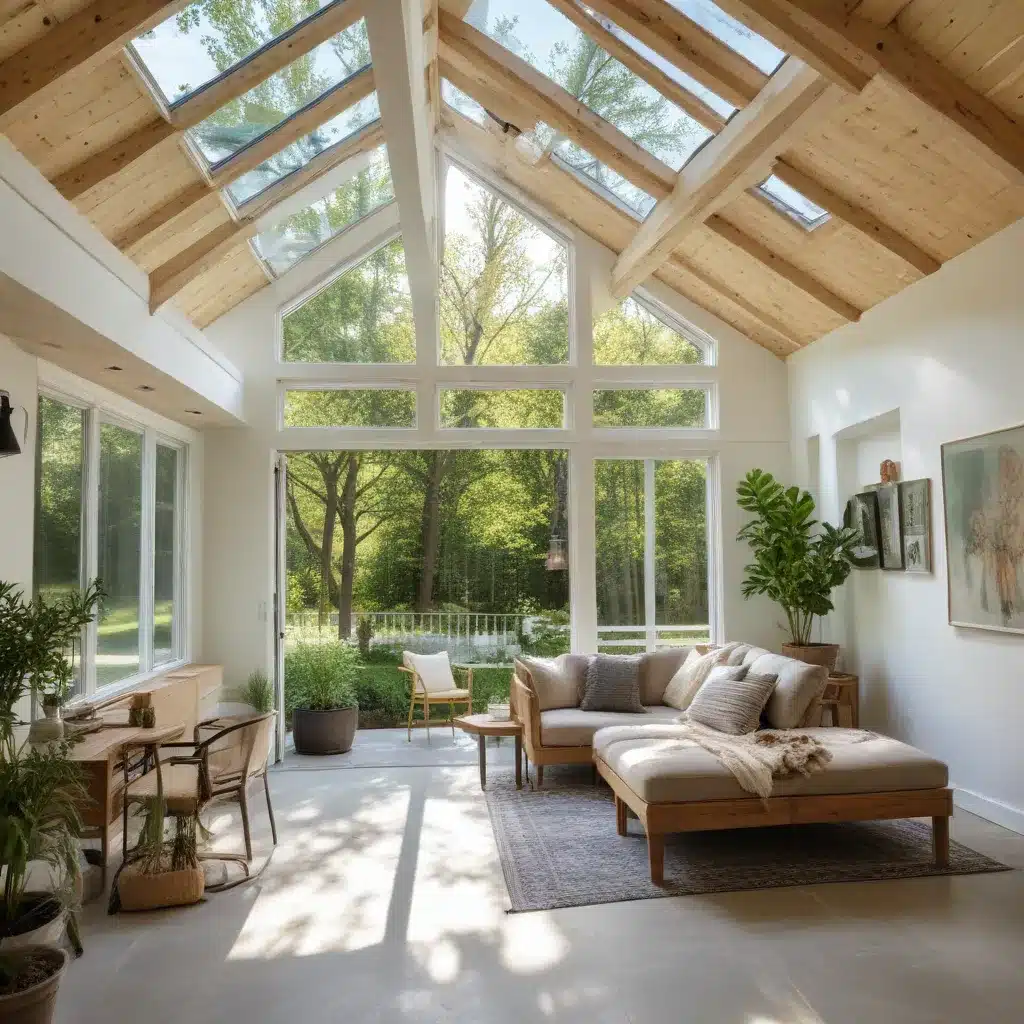
Sustainable Home Additions: Expanding Your Space Thoughtfully
As an experienced home improvement consultant, I’ve seen firsthand the transformative power of sustainable home additions. Expanding your living space doesn’t have to come at the cost of environmental impact or your budget. In fact, with the right strategies, you can create a beautiful, energy-efficient addition that enhances your property value and aligns with your family’s needs.
Environmentally-Friendly Expansion
Gone are the days when home additions meant sacrificing sustainability. Today, eco-friendly building materials, innovative construction techniques, and renewable energy solutions allow you to expand your home while reducing your carbon footprint. By prioritizing energy efficiency, you can lower your utility bills and contribute to a healthier planet.
One of the key considerations for sustainable home additions is the selection of building materials. Look for low-VOC paints, formaldehyde-free insulation, and reclaimed or recycled wood to minimize the environmental impact. Additionally, high-performance windows and efficient HVAC systems can significantly improve your home’s energy performance.
Cost-Effective Design
Sustainable home additions don’t have to break the bank. In fact, thoughtful design and careful planning can make them a cost-effective solution for expanding your living space. By optimizing the layout, minimizing waste, and leveraging energy-efficient features, you can create a stunning addition without overstretching your budget.
One way to approach this is by considering passive solar design, which harnesses the power of the sun to heat and cool your home naturally. Strategically placed windows, south-facing orientation, and proper insulation can reduce your reliance on mechanical heating and cooling, leading to significant long-term savings on your energy bills.
Increased Property Value
Investing in a sustainable home addition not only enhances your living experience but also increases the resale value of your property. Homebuyers are increasingly prioritizing energy efficiency, environmental consciousness, and thoughtful design when searching for their next home. By incorporating these elements into your addition, you can differentiate your property and appeal to a wider pool of potential buyers.
Planning Your Sustainable Home Addition
Assessing Your Space and Needs
Before embarking on your sustainable home addition project, it’s crucial to carefully evaluate your existing space and identify your family’s needs. Consider factors such as room layout, traffic flow, and natural light to ensure the new addition seamlessly integrates with the rest of your home.
Considering Sustainable Materials
When selecting materials for your sustainable home addition, look for options that are durable, energy-efficient, and environmentally friendly. This may include bamboo flooring, recycled-content insulation, and energy-star-certified appliances. Consulting with a green building expert can help you navigate the abundance of eco-friendly materials available.
Incorporating Energy-Efficient Features
Maximizing the energy efficiency of your home addition is key to achieving long-term sustainability. Incorporate high-R-value insulation, Energy Star-rated windows, and smart home technology to reduce your energy consumption and lower your utility bills. Additionally, explore the possibility of integrating renewable energy sources, such as solar panels or geothermal heat pumps, to further enhance your home’s environmental impact.
Sustainable Construction Techniques
Minimizing Waste and Emissions
Sustainable home additions prioritize the reduction of construction waste and emissions. This can be achieved through careful planning, efficient material usage, and proper waste management. Collaborate with your contractor to identify opportunities for recycling and repurposing materials, minimizing the amount of waste sent to landfills.
Utilizing Renewable Energy Sources
Incorporating renewable energy sources, such as solar power or wind turbines, into your home addition can significantly reduce your reliance on fossil fuels and lower your carbon footprint. By harnessing the power of nature, you can generate your own clean energy and potentially even become a net-zero energy home.
Ensuring Proper Insulation and Ventilation
Proper insulation and ventilation are crucial for maintaining a comfortable, energy-efficient living environment. Invest in high-performance insulation materials and airtight construction to minimize heat transfer and reduce your heating and cooling loads. Additionally, incorporate passive ventilation strategies, such as strategically placed windows and efficient HVAC systems, to promote healthy indoor air quality.
Integrating Sustainability into Your Home’s Aesthetic
Blending New and Existing Structures
When designing your sustainable home addition, it’s important to create a seamless integration between the new and existing structures. This can be achieved through complementary architectural styles, matching materials, and harmonious color schemes. By ensuring a cohesive aesthetic, you can enhance the overall visual appeal of your home and maintain a sense of unity.
Enhancing Natural Lighting and Airflow
Maximizing natural lighting and airflow are hallmarks of sustainable home design. Incorporate large windows, skylights, and strategically placed doors to allow ample daylight to flood your living spaces. This not only reduces your reliance on artificial lighting but also promotes a healthier, more inviting environment for your family.
Incorporating Eco-Friendly Landscaping
The surrounding landscape plays a crucial role in the overall sustainability of your home. Consider drought-tolerant plants, native species, and permeable surfaces to reduce water consumption and minimize the environmental impact of your outdoor spaces. Integrate rain gardens and bioswales to manage stormwater runoff, and explore the possibility of edible landscaping to grow your own produce.
By embracing sustainable design principles, you can create a home addition that not only enhances your living experience but also contributes to a more eco-friendly future. Whether you’re looking to expand your living space, improve your home’s energy efficiency, or increase its resale value, a thoughtfully planned sustainable addition can be a transformative investment. Visit Reluctant Renovator for more inspiration and expert guidance on your home improvement journey.



